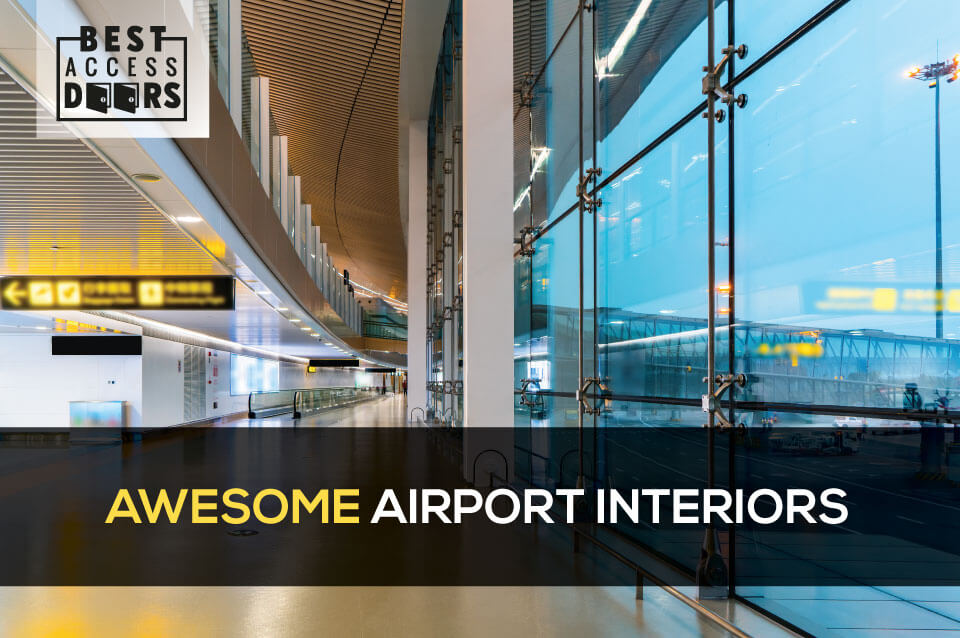Awesome Airport Interiors
Posted by Best Access Doors on 17th Nov 2021
The airport can be both the happiest and saddest place on earth. It is where we can hear either hellos or goodbyes, where some people seek new opportunities and reconnect old ones. No matter what situation, the airport is where we must feel optimistic and at home.
Aviation has evolved throughout the years. It is one of the most efficient industries that connect people from different cultures and businesses worldwide. Over the past years, we can see the evolution and modernization of airport architecture. You may find some weird architecture, but airport architects usually focus on making traveling simpler, faster, and still have that sense of luxury. Every airport has showcased its unique interior design concept, from minimalistic designs to new edgy architecture to artificial waterfalls. Here is a list of airport interior design concepts that stood out the most.
Beijing Daxing International Airport
Beijing Daxing is not only an airport, but it also integrates into the country's central transport hub. This airport is estimated to accommodate 100 million passengers and 4 million tons of cargo annually by 2025. Inspired by traditional Chinese Architecture, six flowing forms of the structure assemble at the central courtyard.
A network of linear skylights accompanies the heart of the terminal. This structure directs all passengers through a navigation system. The concept of a compact airport design allows passengers to travel short distances without an automatic transport system.
Jewel Changi Airport
Often known for the best airport designs globally, the Changi Airport at Singapore is designed by a master architect named Moshie Safdie, one of Southeast Asia's most prominent transportation hubs. Terminal 3 can accommodate the increasing air traffic.
What makes this airport more unique is the combination of the two environments: a marketplace and a paradise garden that creates a community-centric typology of heart and soul. The nature of the structure houses the world-s largest indoor waterfall called the "rain vortex," which cools the forest valley garden equipped with over 200 species of flora and fauna that has become the main attraction of the airport.
Denver International Airport
This airport is truly a revolutionary architectural design for the city of Denver in the USA. The design has created a symbol for the town through its iconic architecture rather than a gateway. The flexible roof canopy represents the Majestic snow-capped rock mountains of the context, which many admire. The roof material helps use artificial daylight, capitalizing on 300 days of sunlight every year while reflecting 90% solar radiation.
Madrid-Barajas Airport Terminal 4
This airport has features that distribute the circulation into three linear modules functionally; the terminal building provides different functions according to the passenger traffic arrival and departure. The structural system of this airport has light-filled canyons that provide natural light to lower levels. This airport design also helps in the promotion of environmental sustainability by minimizing energy consumption and costs. The vertical motion of passengers is located between the canyons to help designate the order of actions that the passenger must carry out for airport formalities.
Chhatrapati Shivaji International Airport
The international airport in Mumbai, India, can welcome up to 6 million passengers every year and serve five times. The design of this airport is inclined to the complex web of passengers and planes, overcoming the frequent delays that can cause chaos in the overall functioning of the establishment. The airport is very noticeable among the contemporary to a more traditional outlook because of the design inspired by the traditional Indian Pavilions and the peacock feathers. The drop-off zones are designed for large parties of well-wishers to accommodate the Indian way of welcoming the guests.
Hamad International Airport Passenger Terminal Complex
With Qatar's progressive growth, the airport design, with its curving and dramatic roof canopy, is inspired by the ocean waves and dunes that reflect a powerful image of the context, therefore, paying tribute to the city's cultural heritage. The unobstructed views enable passengers to find their destinations quickly. The lack of ornamentation provides a clear vision for understanding spatial functions and circulation within the large complex.
If you're looking for more exciting blogs about architecture and construction, be sure to visit Best Access Doors, where we also provide heavy-duty access doors for your construction project needs. You can call us at 1-800-483-0823 for more details.
Share our story - the 2025 version is available

